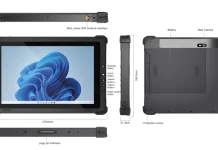In the fast-paced world of digital transformation, seamless integration is the linchpin for success. Salesforce, a leader in customer relationship management (CRM), and MuleSoft, a top integration platform, have joined forces to empower businesses with robust integration capabilities. For developers looking to demonstrate their proficiency in leveraging the synergy between Salesforce and MuleSoft, the Salesforce MuleSoft Developer II exam is a pivotal milestone on their journey to becoming integration experts.
Click here for more information about exam MuleSoft Developer:
https://www.examsempire.com/salesforce-mulesoft-developer-ii
Understanding the Exam
The Salesforce MuleSoft Developer II exam is tailored for developers who specialize in building integration solutions using MuleSoft’s Anypoint Platform within the Salesforce ecosystem. This comprehensive exam evaluates candidates’ knowledge and skills across various domains, including:
- Anypoint Platform Fundamentals: A solid understanding of the core components and features of Anypoint Platform is essential. Candidates should be familiar with Anypoint Studio, Anypoint Exchange, API Manager, and other key tools.
- Salesforce Integration: Mastery of integrating Salesforce with external systems and applications is a cornerstone of this exam. Candidates should understand how to leverage MuleSoft to connect Salesforce to other cloud and on-premises systems, as well as best practices for data synchronization and real-time integration.
- API-Led Connectivity: Proficiency in designing and implementing API-led connectivity is crucial for building scalable and reusable integration solutions. Candidates should be adept at designing APIs according to the three-tiered approach (System, Process, and Experience APIs) and implementing API policies for security and governance.
- Data Transformation and Mapping: The ability to transform data between different formats and structures is a fundamental skill for integration developers. Candidates should be proficient in using MuleSoft’s DataWeave transformation language and mapping data between systems with precision.
- Error Handling and Logging: Building robust integration solutions requires effective error handling and logging mechanisms. Candidates should understand how to implement error handling strategies, manage exceptions, and log relevant information for troubleshooting and monitoring purposes.
- Testing and Deployment: Knowledge of testing methodologies and deployment strategies is essential for ensuring the reliability and scalability of integration solutions. Candidates should be familiar with unit testing, integration testing, and continuous integration/continuous deployment (CI/CD) practices.
Preparation Strategies
Preparing for the Salesforce MuleSoft Developer II exam requires a combination of theoretical understanding, hands-on experience, and strategic study tactics. Here are some effective strategies to help candidates succeed:
- Study the Exam Guide: Start by thoroughly reviewing the official exam guide provided by Salesforce. Understand the exam objectives, domains, and weighting to prioritize your study efforts accordingly.
- Hands-on Practice: Practical experience is invaluable when preparing for the exam. Spend time working on real-world integration projects using Anypoint Platform within the Salesforce environment. Experiment with different integration patterns, data mappings, and error handling scenarios to deepen your understanding.
- Training and Resources: Take advantage of Salesforce’s official training courses, documentation, and online resources. These materials cover a wide range of topics relevant to the exam and provide valuable insights and best practices.
- Join the Community: Engage with the Salesforce and MuleSoft communities through forums, user groups, and social media channels. Participate in discussions, ask questions, and learn from the experiences of fellow integration developers.
- Practice Exams: Familiarize yourself with the exam format and level of difficulty by taking practice exams. Several online platforms offer mock exams and quizzes specifically tailored to the Salesforce MuleSoft Developer II exam.
- Review and Reinforce: Continuously review your progress and revisit challenging topics to reinforce your understanding. Focus on areas where you feel less confident and dedicate extra time to mastering those concepts.
Exam Day Tips
On the day of the exam, follow these tips to maximize your performance:
- Arrive Early: Log in to the exam platform well in advance to ensure a smooth start. Address any technical issues promptly to avoid unnecessary stress.
- Read Carefully: Pay close attention to each question and read it carefully before selecting your answer. Some questions may contain subtle nuances or require multiple steps to solve.
- Manage Time Wisely: Pace yourself throughout the exam and allocate time to each question based on its complexity. Flag difficult questions and return to them later if you have time remaining.
- Stay Calm and Focused: Maintain a calm and focused mindset, even if you encounter challenging questions. Trust in your preparation and approach each question methodically.
- Review Your Answers: Before submitting the exam, review your answers to ensure accuracy. Double-check data mappings, configurations, and any written responses for errors.
Click here for more information about exam MuleSoft Developer:
https://www.examsempire.com/salesforce-mulesoft-developer-ii
Becoming a certified Salesforce MuleSoft Developer II is a significant achievement that demonstrates your expertise in building integration solutions within the Salesforce ecosystem using MuleSoft’s Anypoint Platform. By following a structured study plan, leveraging practical experience, and employing effective exam strategies, you can confidently tackle the Salesforce MuleSoft Developer II exam and unlock new opportunities to drive innovation and success through seamless integration.























![InstaPro APK Download Latest Version 2023 [Anti Ban]](https://olo.my.id/wp-content/uploads/2023/10/instapro-100x70.jpg)

